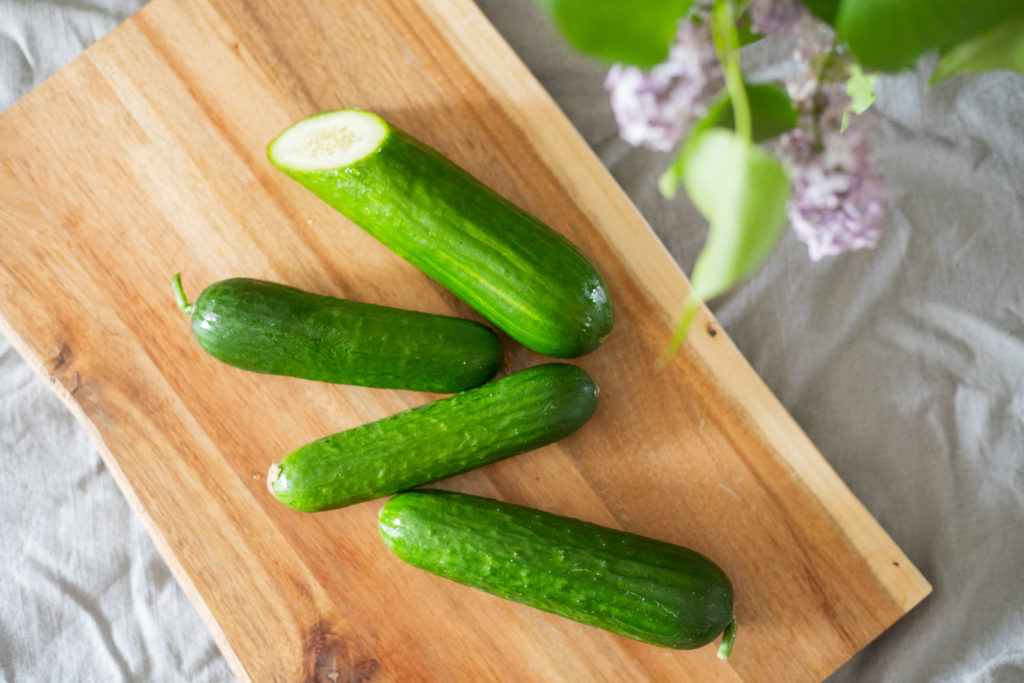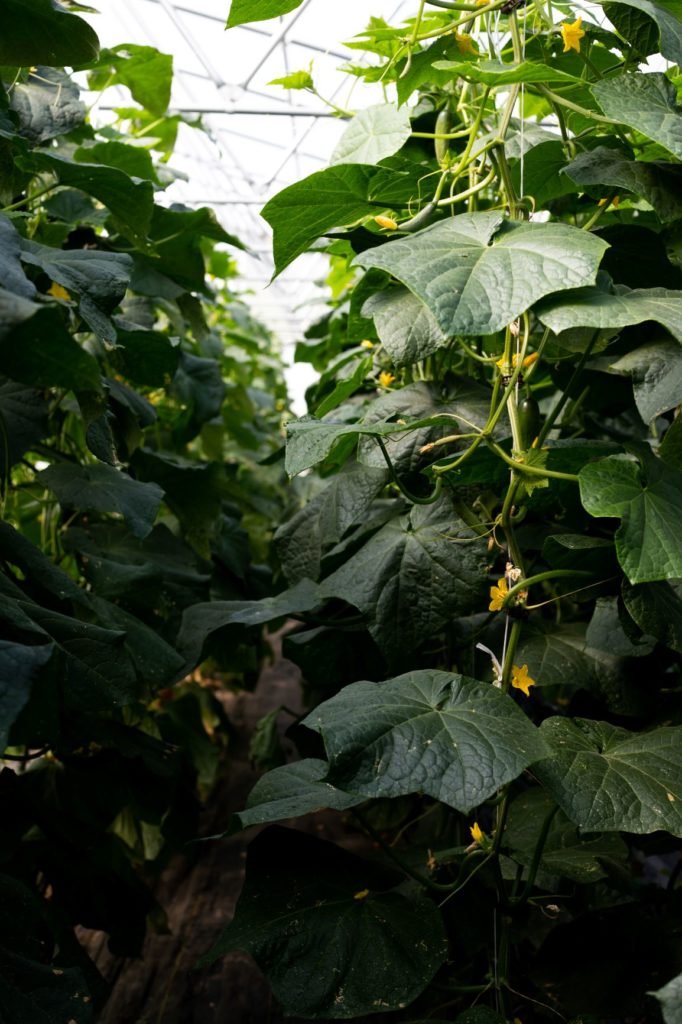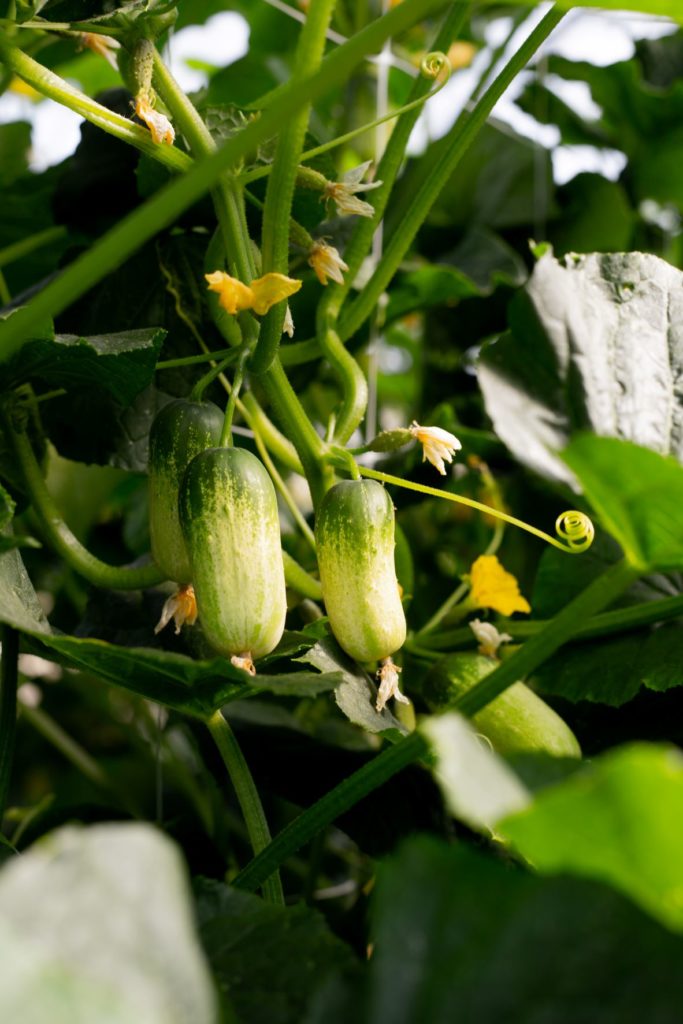
Did you know that Michigan is the #1 grower of pickling cucumbers in the nation? We think that Michigan pickles, and fresh cucumbers, are worth a stop at your local farm stand! Cucumbers can be found as early as May from farmers with greenhouses, but the season extends to as late as September – so cucumbers are a Summer-long standby for local eating.
Cucumber Varieties to Know
Cukes can take many forms! Get to know your cucumbers by asking your local farmer about their varieties, and the best uses for each one. In the meantime, see our general guide, below:
- Pickling cucumber: a bumpy, thin-skinned cucumber meant for soaking in a brine to make pickles
- Slicing cucumber: cucumbers grown to be eaten fresh- also known as a ‘garden cucumber’
- English cucumber: generally longer and with thinner skin than a slicing cucumber, but eaten in a similar way
- Middle Eastern or Persian cucumber: generally shorter and smaller than an English cucumber, often sold in packages of 6 at the grocery store. Meant for eating fresh.
- Cornichons and gherkins: small pickles made from immature cucumbers
- Lemon cucumber: Named after the appearance (roughly lemon shaped, and yellow), not the flavor, this is a snacking cucumber with a mild flavor
- Cucamelon: Part of the cucurbitae family, although not strictly a cucumber, this adorable inch-long fruit tastes similar to cucumber, but with a tangy bite.


Health Benefits of Cucumber
Trying to keep more hydrated this Summer? Try snacking on cucumber, which is 96% water, and therefore a great snack for those trying to up their water intake. Not only does it work as a low-calorie snack, it also includes 62% of the recommended daily value of Vitamin K.
Growing Cucumbers
Cucumbers like plenty of sun, heat and water. Make sure to keep your watering to at least 1” a week to avoid a bitter cuke! When purchasing plants or seeds, keep in mind that there are two varieties: vining, which can be grown similar to tomatoes, or bush, which is compact and great for patio plantings.
Storing Cucumbers
Cucumber, once harvested, is best stored in the fridge in a sealable bag or container. However, if you have purchased cucumbers with the intention of pickling them, the quicker you get to processing, the better! Use a quick pickling recipe to enjoy them right away (or up to a week) from your fridge or check out MSU’s preservation tips for waterbath canning.
Try our Recipe for Cucumber-Radish Salsa!
Claire Butler is the Content Strategy Specialist for Taste the Local Difference. Contact her at [email protected].
Further Reading:
